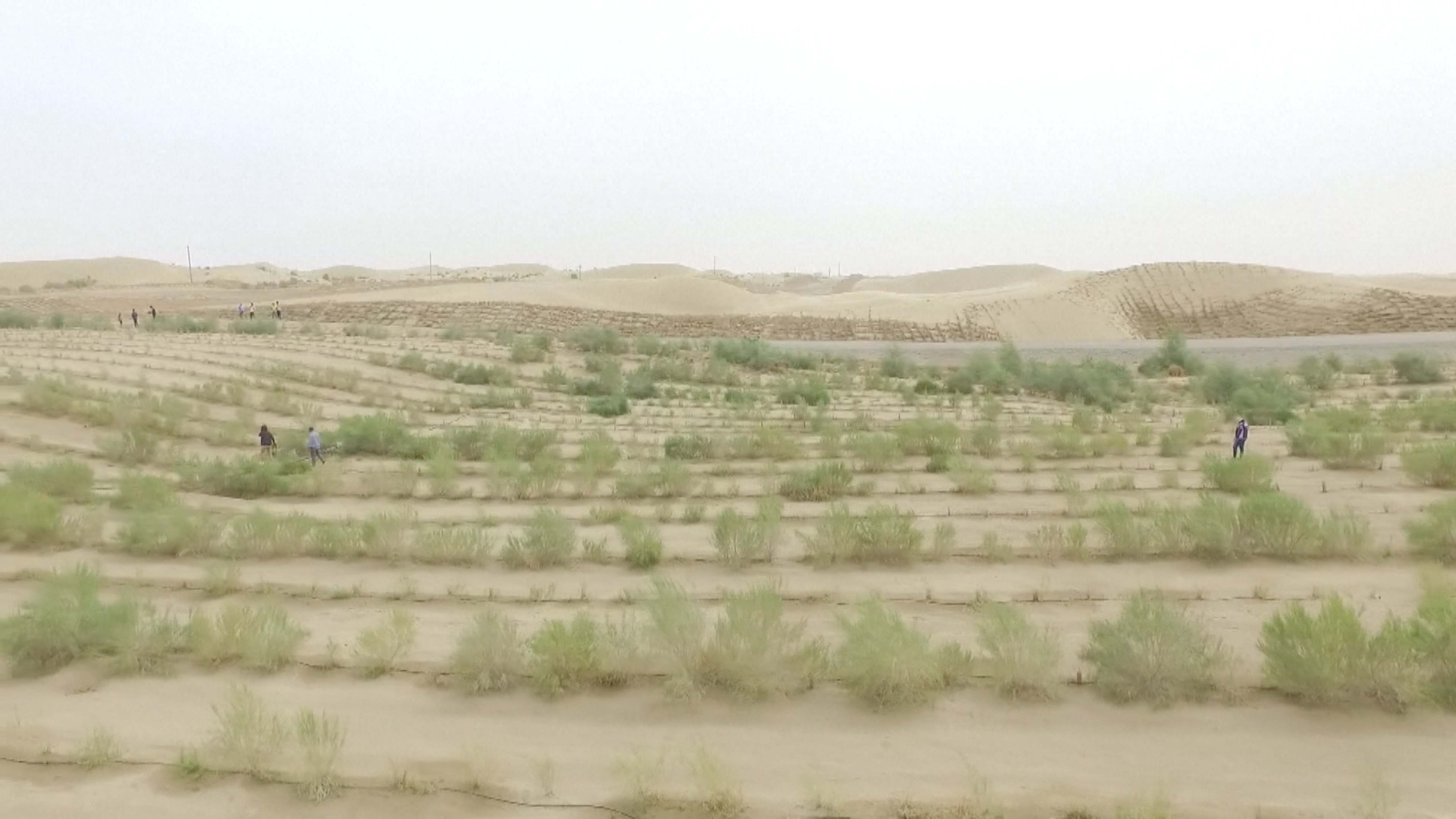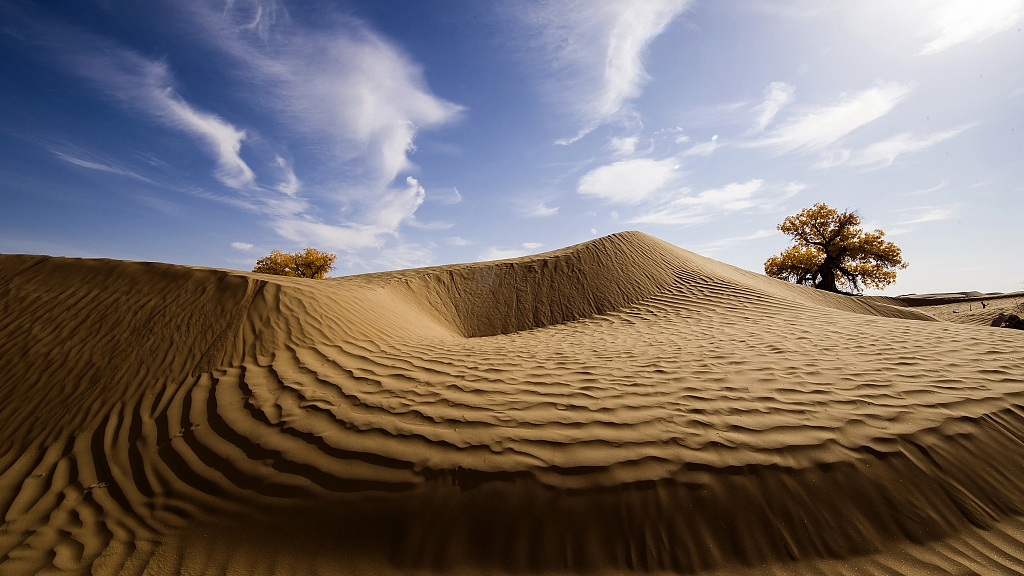

Villagers from different ethnic groups have been dedicated to the desertification control for more than 20 years in Qiemo County of northwest China's Xinjiang Uygur Autonomous Region.
Located at the heart of the Taklamakan Desert, Qiemo County has a desert area of 53,800 square kilometers, taking up 38.4 percent of its total land.

Taklamakan Desert in Xinjiang Uygur Autonomous Region of China. /VCG Photo
In 1998, the county launched a sandstorm control project and local farmers began to plant trees. In the past 20 years, they planted 23 kilometers of sandstorm barriers on the edges of the desert and added a total of 7,666.7 hectares of forests.
During the summer time, staff members of the local desertification control station take special care of the forests, as water availability in this season determines whether the forests could survive.
"We treat every sapling here like our own child. We take care if they have enough water, if they can survive, or if they will be blown away by wind. The sand barriers we create aim to protect their roots and to make sure that they can take roots here and survive," said Patigul Yasin, staff member of Qiemo Desertification Control Station.
Each member of the Qiemo Desertification Control Station is in charge of 66.7 hectares of forests and each 0.067 hectares of forests has nearly 300-meter long drip tube, so each member has to take care of about 300,000-meter long drip tube.
"In short, each of us has to walk more than 20 kilometers every day for patrolling the woods," said Yasin.
The harsh natural condition did not daunt local villagers. In the past 20 years, the number of members of the desertification control station went up from 12 to 57, and half of them are women.
The villagers say the environment is getting better thanks to the desertification control work.
"In the past, our house would be full of sand when the wind blew up. I had to clean it every day. Now, there is less sand. The environment is getting better, I think," said Geziam Ibray, a villager of Qiemo County.
(Cover image: screenshot from the video.)
(If you want to contribute and have specific expertise, please contact us at nature@cgtn.com)

Copyright © 2018 CGTN. Beijing ICP prepared NO.16065310-3
Copyright © 2018 CGTN. Beijing ICP prepared NO.16065310-3